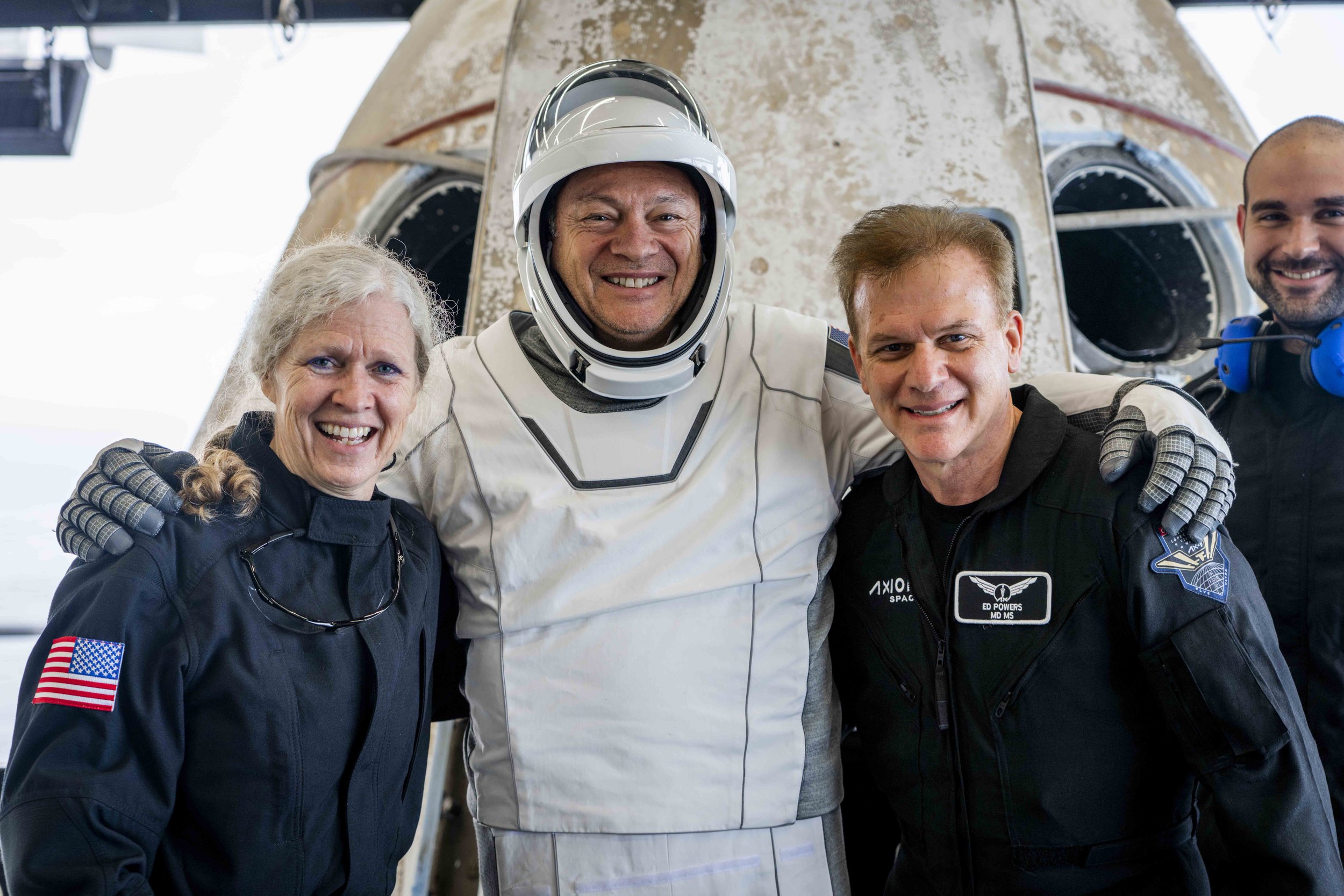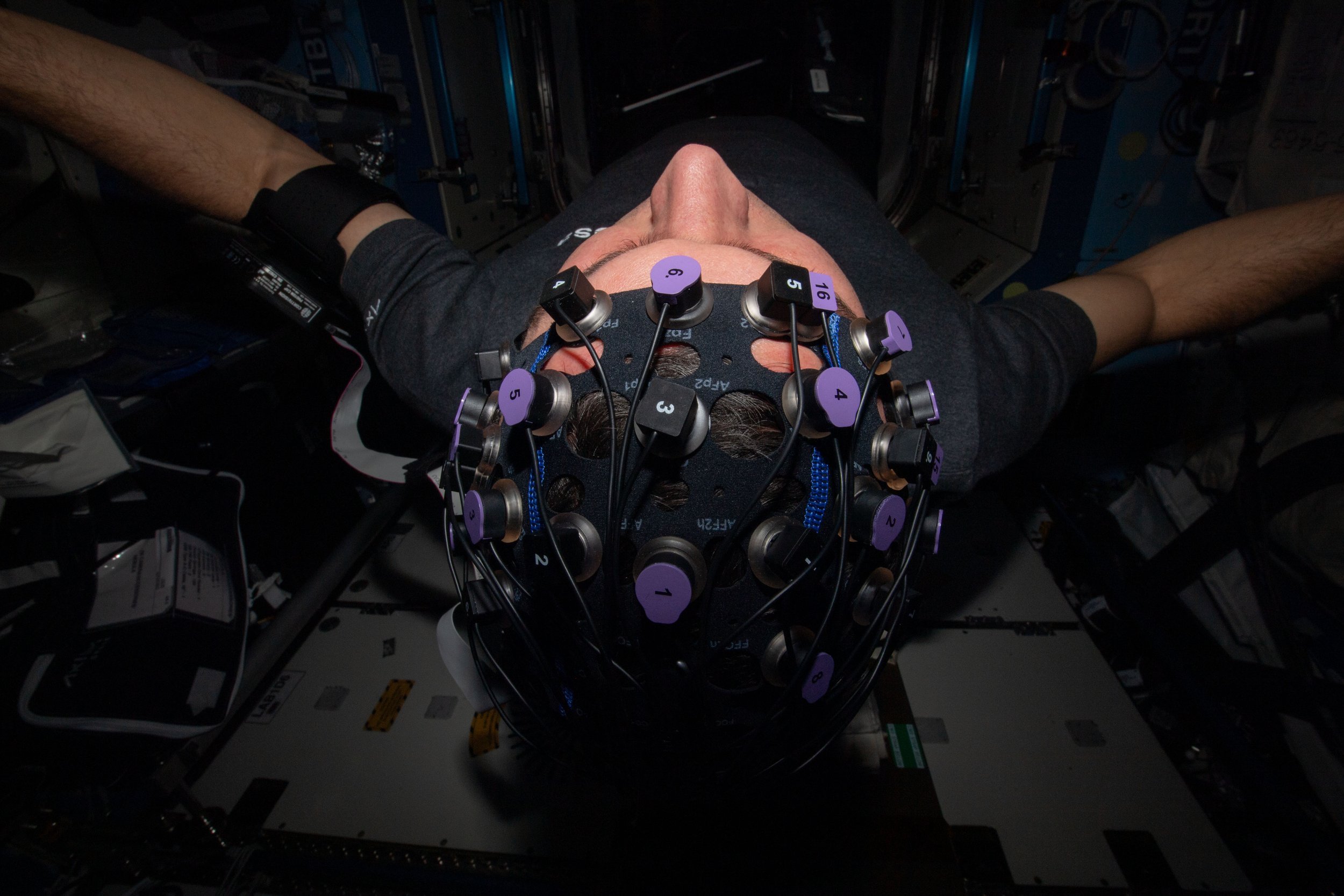HOUSTON, August 5, 2024 – Axiom Space officially announced today that it is partnering with India, through the Indian Space Research Organisation (ISRO), Poland, with European Space Agency (ESA) support, and Hungary to send three national astronauts to the space station on Axiom Mission 4 (Ax-4), the company’s next commercial human spaceflight mission to the orbiting laboratory.
The Ax-4 crewmembers arrived in Houston today to begin training with Axiom Space, NASA, and SpaceX.
The crew assigned to Ax-4 includes Commander Peggy Whitson, Mission Pilot Shubhanshu Shukla of India, Mission Specialist Sławosz Uznański of ESA/Poland, and Mission Specialist Tibor Kapu of Hungary. The assigned crewmembers are pending approval to fly to the International Space Station by the Multilateral Crew Operations Panel (MCOP). MCOP decisions are made in consensus by representatives from all five-space station international partners: NASA, ESA, Roscosmos, Japan Aerospace Exploration Agency, and the Canadian Space Agency.
“Ax-4 represents Axiom Space’s continued efforts to build opportunity for countries to research, innovate, test, and engage with people around the world while in low-Earth orbit,” said Michael Suffredini, CEO of Axiom Space. “This mission broadens horizons for nations with ambitious goals of advancing scientific, technological, and economic pursuits. Our collaboration with ESA for a second time and the inclusion of Hungary and India underscores Axiom Space’s ability to cultivate global partners, expand the scope of exploration, and open up new avenues to grow a global space economy.”
The mission will place significant emphasis on scientific research, technology demonstrations, and the commercialization of space. Additionally, the mission aims to foster cooperation by sharing knowledge, resources, and opportunities with our partners, solidifying these nations as leaders within the growing space community.
“I look forward to commanding my second commercial human spaceflight mission with Axiom Space,” said Peggy Whitson, Ax-4 commander. “With a culturally diverse crew, we are not only advancing scientific knowledge but also fostering international collaboration. Our previous missions set the stage. Axiom Mission 1 was the first all-private mission to the space station, Axiom Mission 2 launched the first Saudi female to space, and Axiom Mission 3 included both the first Turkish astronaut and first ESA astronaut to fly on a commercial space mission. Now, with Ax-4, we ascend even higher, bringing even more nations to low-Earth orbit and expanding humanity’s reach among the stars.”
Ax-4 will launch to the orbiting laboratory aboard a SpaceX Falcon 9 rocket and Dragon spacecraft from Florida, and the crew is expected to spend up to 14 days on the space station.
Of note, Ax-4 will be the second Axiom Space mission to include an ESA astronaut. Marcus Wandt became ESA’s first-ever project astronaut on Ax-3 and the second ESA astronaut of Swedish nationality to travel to the space station. During Ax-4, Axiom Space will continue to build on its partnership with ESA by sending a Polish astronaut to space for the first time in more than 40 years.
Additionally, in July 2022, Axiom Space and the Hungarian government’s Ministry of Foreign Affairs and Trade signed a memorandum of understanding (MOU) to further the Hungarian to Orbit (HUNOR) program, Hungary’s astronaut program, and advance opportunities in space research and technology development. Building on that MOU, in Sept. 2023, Axiom Space signed a spaceflight framework agreement (SFA) with the Ministry to facilitate the launch of a Hungarian astronaut.
Most recently, in July, Axiom Space signed an SFA with ISRO. This is a significant milestone toward India’s goal of mounting a joint ISRO-NASA effort on board the International Space Station.
###













































